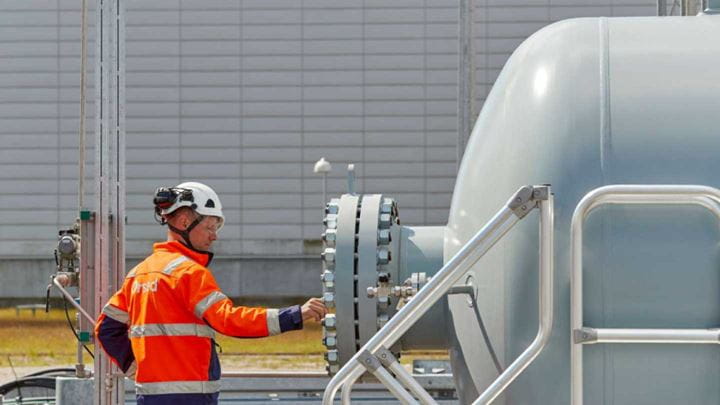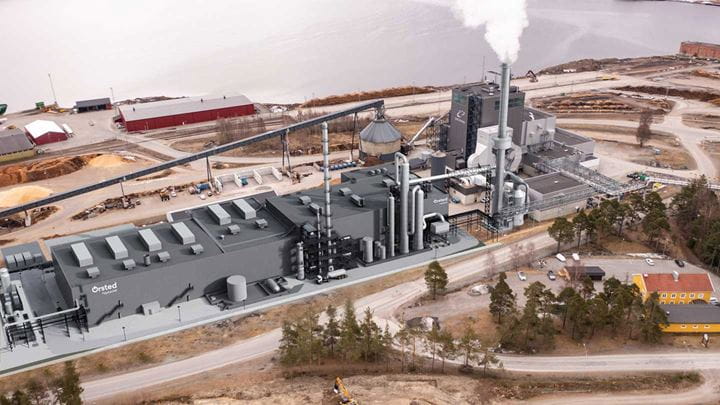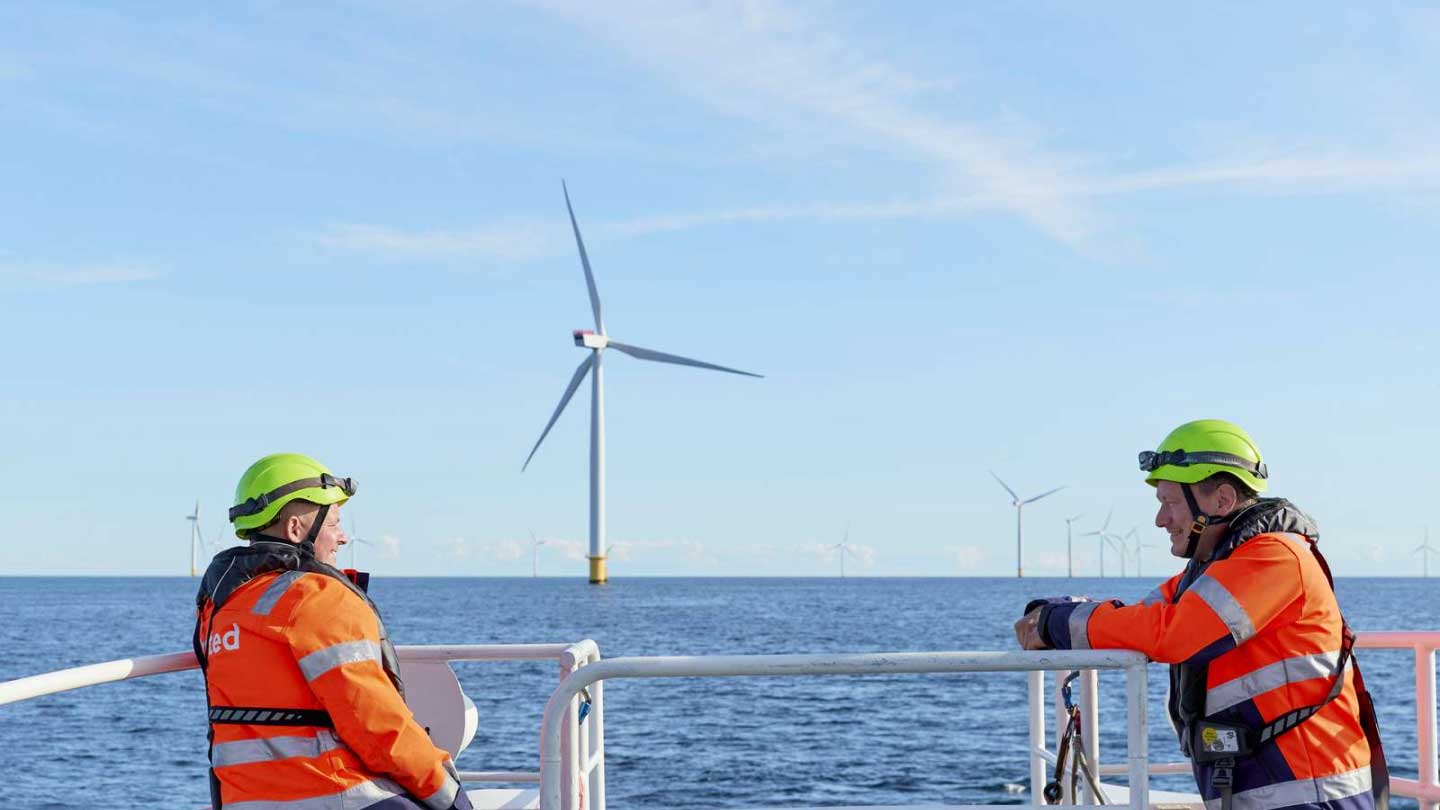| How it works |
| Growth |
| Benefits |
| Our projects |
| FAQs |
Power-to-X means using renewable electricity, for example wind power, to create something else (‘X’). The ‘X’ created is an energy carrier – usually renewable hydrogen, which can power medium- to heavy-duty transport or be used in industry.
Renewable hydrogen, or green hydrogen, can in turn be synthesised into other green fuels, such as e-methanol for shipping, e-kerosene for aviation, and e-ammonia for industrial use in fertilisers or as a shipping fuel. We also call these electro-fuels, or e-fuels.
The scientific process used to create green hydrogen is electrolysis. In other words, green electricity is used to split water into hydrogen and oxygen.
Renewable power
Renewable electricity is generated from wind farms or solar centres and transmitted to the grid or directly to electrolysers.
Electrolysis
Electrolysis involves splitting water into oxygen and hydrogen with the help of electricity. Electrolysis produces renewable hydrogen if powered by green energy.
H2 Renewable hydrogen
We can use renewable hydrogen in industry or to power medium- to heavy-duty transport. We can also use it to create other green fuels – for shipping, aviation, or industrial use in fertilisers, among other things.
-
Renewable power
-
Electrolysis
-
H2 Renewable hydrogen
One third of global carbon emissions come from industry and heavy transport. While we have the science for producing green hydrogen and green fuels to decarbonise these sectors, the challenge is to:
- combine and scale the solutions
- make them cost-competitive
- make them work in unison with fluctuating renewable energy production.
At Ørsted, we like a challenge. We’ve set our sights on creating a world that runs entirely on green energy, after all. Using our experience as the global leader in offshore wind, we’re moving full speed ahead to accelerate deployment of Power-to-X.
We have projects underway in Europe and the US. By 2025, our FlagshipONE facility in Sweden will start producing 50,000 tonnes of e-methanol every year – green fuel that will enable vessels to sail carbon-free.
Get passionate about green electrons and water molecules
Will we – government, industry, society, consumers, voters – support and uphold the marriage of the green electron and the water molecule? Be inspired by Olivia Breese's TED Talk. You'll see green hydrogen in a whole new light – and end up invested in a true love story.
Ørsted's Power-to-X projects
In order to truly scale Power-to-X technology and make it cost-competitive at the speed that’s needed to decarbonise society, we need partners. That’s why we’re working with leading demand partners, industry partners, and regulatory partners to develop large-scale production of green fuels.
Frequently asked questions about Power-to-X, green hydrogen, and other green fuels
-
Is hydrogen renewable?
-
Does the production of renewable hydrogen generate any waste?
-
How expensive is renewable hydrogen?
-
Is renewable hydrogen safe?
-
What are the uses of hydrogen?
-
How can we speed up the adoption of renewable hydrogen?





